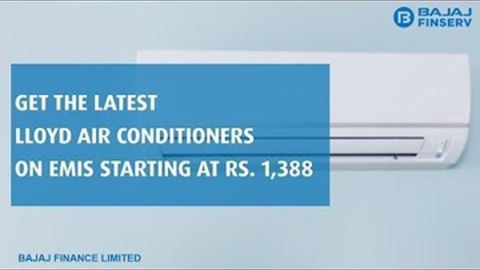The hot Indian summer means only one thing: rising temperatures and increasing discomfort! To survive the summer heat without breaking into a sweat, buying the best AC is a must. While you have several options to choose from, regularly using an AC can increase your monthly electricity bill. As a result, it’s essential to pick an AC with a good star rating. If you’re wondering the difference between 3-star and 5-star ACs, read on to get all the information at your fingertips.
What is star rating in AC?
A star rating system depicts the energy efficiency of an electrical appliance. The higher the number of stars, the more efficient it is. The Bureau of Energy Efficiency (BEE) India devised the star rating system, with a range of 1 to 5 stars. This system ensured that the commoner easily understood the energy efficiency of appliances.
A star rating takes two parameters into account
- The cooling capacity, which is a measure of its ability to cool a room, which is expressed in British Thermal Units (BTU)
- The Energy Efficiency Rating (EER), which is the amount of cooling it can provide using a certain amount of power
The highest star rating of an air conditioner or any electronic device is 5, and the lowest star rating is 1. Therefore, a 5-star air conditioner will cool your room most efficiently. It means that a 5-star AC will cool a particular room faster while using lesser electricity than a 3-star AC.
Additional Read: How to select the best air conditioner for home
How does knowing your AC’s star rating help?
An AC is not a one-time investment but has substantial recurring costs in monthly or bi-monthly electricity bills. In a country as hot as India, a high electricity bill that can derail your budget is always a possibility. A star-rated appliance, like an AC, allows you to save on electricity costs more efficiently.
Comparison between 3-star vs 5-star AC: Which is better?
The star rating of an electrical appliance is quantified in Energy Efficiency Ratio (EER). A 3-star AC has an EER that ranges between 2.9 to 3.09, and a 5-star AC has an EER of 3.3 or above.
Benefits of 5 star air-conditioners
In monetary terms, the difference between 3-star and 5-star AC is that if the monthly electricity bill of a household with a 3-star AC is Rs. 580, keeping all variables constant, a 5-star AC will result in a bill of Rs. 500. Therefore, the total cost of ownership (TCO) of a 5-star AC is lower in the long run than a 3-star AC.
How much electricity does 3-star and 5-star ACs consume?
One of the key differences between the two variants is how much electricity 3-star and 5-star ACs consume once installed. An air conditioner’s electricity consumption depends on its EER rating. The 5-star ACs are more energy-efficient than a 3-star AC unit. The electricity consumption of a 5-star AC (1.5 tons) is approximately 1.5 units per hour, whereas a 3-star AC (1.5 tons) consumes 1.6 units every hour.
How to buy a 5-star or 3-star air conditioner on easy EMIs
While buying a low-rated AC may require lower payment upfront, a 5-star AC helps you save in the long run via lower electricity bills. With financing from Bajaj Finserv, you can easily get a 5-star AC on affordable EMIs and say goodbye to high electricity bills.
Shop for the best 5-star air conditioners from the Bajaj Mall or Bajaj Finserv EMI Network and get up to 100% finance on your purchase. Just visit any of the 1 lakhs+ partner stores, online or offline, select your product, and use your EMI Network Card to pay. If you don’t have an EMI Network Card, you can apply for one online or submit your documents at your nearest partner store to get instant, in-store financing.
Apply for Bajaj Finserv Insta EMI Card
What’s more, you can buy your AC even more conveniently with a pre-approved offer from Bajaj Finserv. Besides EMI finance, you can also use your pre-approved offer to simplify the process of availing of a home loan, personal loan, business loan etc.
DISCLAIMER:
While care is taken to update the information, products, and services included in or available on our website and related platforms/websites, there may be inadvertent inaccuracies or typographical errors or delays in updating the information. The material contained in this site, and on associated web pages, is for reference and general information purpose and the details mentioned in the respective product/service document shall prevail in case of any inconsistency. Subscribers and users should seek professional advice before acting on the basis of the information contained herein. Please take an informed decision with respect to any product or service after going through the relevant product/service document and applicable terms and conditions. In case any inconsistencies observed, please click on reach us.
*Terms and conditions apply








